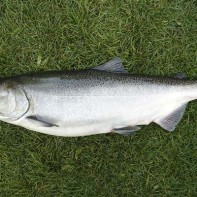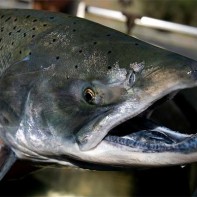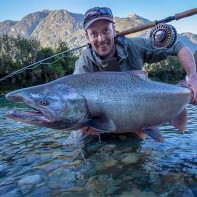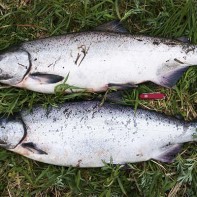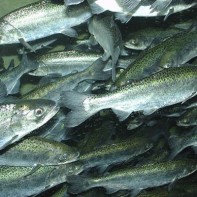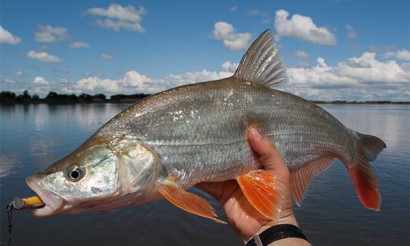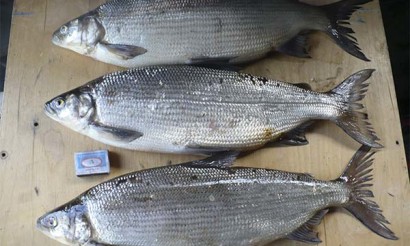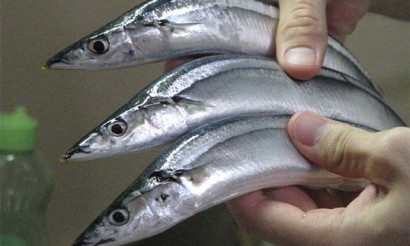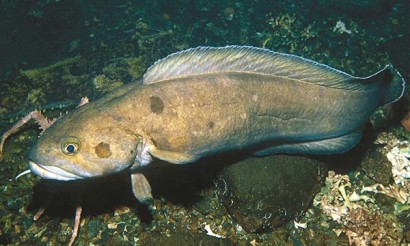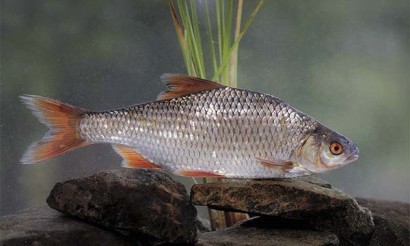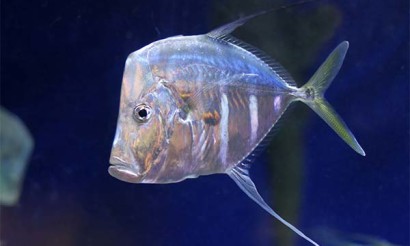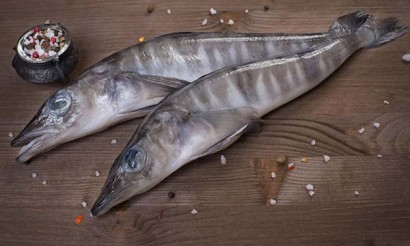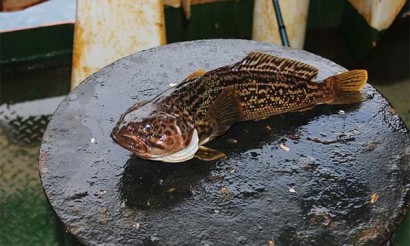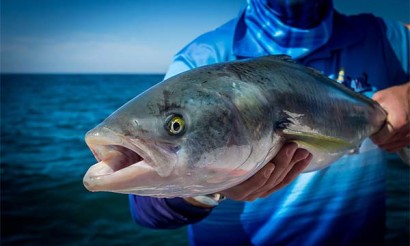Chinook salmon: photo, description, useful properties and recipes
There are high statuses in the Pacific family of noble salmon, such as chinook salmon. This fact has been recognized by people of different countries. The Japanese gave chinook salmon the title of Prince of Salmon, and the Americans called it royal.
- Chinook salmon: what kind of fish it is, how it looks and where it lives
- What it looks like
- Where does it live
- What it eats
- Breeding process
- Species population and status
- How to catch chinook salmon: when, where and on what?
- When to catch
- Where to fish
- What to catch
- What makes chinook salmon different from other fish
- From salmon
- From pink salmon
- From chum salmon
- From silver salmon
- Composition and calories
- How is the chinook salmon useful?
- Chinook salmon caviar benefits
- Hazards and contraindications
- How to choose and store
- Where to buy and how much does it cost?
- How to cook fish Chinook salmon: Recipes
- In the oven
- In the frying pan
- On the grill
- Can Chinook salmon be salted?
- A Q&A
- What does chinook salmon taste like?
- Fatty or not
- Are there many bones in the fish?
- Interesting Facts
Chinook salmon: what kind of fish it is, how it looks and where it lives
Chinook salmon is the largest of the Pacific salmon. They are migratory fish with the ability to tolerate large fluctuations in water salinity. They swim from the depths of the ocean into freshwater rivers, easily adapting to new conditions.
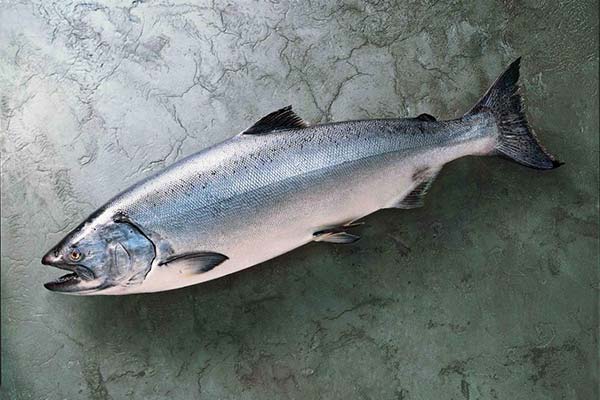
What does it look like?
The size of adult fish - 100-150 cm, the average weight - 9-14 kg. Chinook salmon looks like a log with its rounded shape. The large head smoothly and roundedly transitions to the torso. The jaws are large, as predators are supposed to be. Color gray with silver, with dark gray flecks of indefinite shape. The tail looks like a corrugated triangle. The eyes are small, located at the edges above the upper jaw.
During spawning, the king salmon blooms: its torso takes on a brown hue with red speckles, and the color of the back and head darkens.
Where does it live?
The chinook salmon spends most of its time in the sea. It is found in the Amur River, near Anadyr, on the Commander Islands, and in waters north of Hokkaido Island. In Russia, due to poaching, sockeye salmon has become a rare guest, but is still found on the northeastern coast and swims to the shores of Kamchatka. More often shoals from Pacific waters enter the rivers of Canada, California and Washington. Fish migrate to freshwater cool rivers to spawn.
What does it feed on
In the marine environment, all fish feed on fish that are smaller, which is only natural. Chinook salmon, though noble, are no exception to this rule. The fry need to grow and develop, early in life they feed on plankton drifting freely in the water. As they develop, the fish begin to eat insects and crustaceans. Juveniles prey on small fish and shrimp.
The food of the adult "Prince Salmon" is herring and sardines. Both children and adults do not deny themselves in the delicacies: eating the caviar of other fish.
Reproduction process
After growing up and puberty, salmon migrate to spawn in clean freshwater rivers. In late spring, a school of strong, large fish swim upstream to the upper mountain springs, crossing the raging streams. At the bottom of the river the females make "nests" by hammering out hollows with their powerful tails. Spawning in Far Eastern rivers lasts throughout the summer.
Chinook salmon, like other members of the salmon family, die after spawning. When the fish spawn, they produce steroid hormones, including the stress hormone cortisol, which causes their death. They die a few weeks after spawning. During this time, the eggs have already had time to develop into fry that need food. Salmon fry get valuable substances for growth and development by feeding on the bodies of their dead parents.
Young chinook salmon go to the sea in their second year of life. The fish spends 4 to 7 years in the deep sea until it returns to spawn, driven by unknown forces to where it came from. For some specimens, fattening takes place in coastal areas. Such chinook salmon do not grow to large sizes.
Population and status of the species
The king salmon population has been disrupted by overfishing and vicious poaching that has long been observed on northeastern shores of Russia. It will take many years to recover this species in our waters to ensure a sustainable population. Chinook salmon fishing is strictly limited in many places and banned in some.
The good news is that the U.S. population remains stable, because Chinook salmon is a valuable fish that replaces the meat diet with taste and nutrition.
How to fish for chinook salmon: when, where and for what?
Anglers treat chinook salmon with great respect. To catch king salmon on tackle, one must have a sporting interest, the art of fishing, perseverance and stamina. Knowledge, dexterity and experience encourage anglers to catch this strong, cunning and large fish.
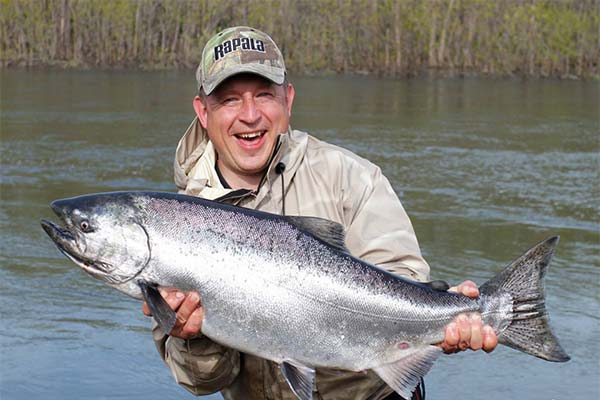
Whenever fishing, one must be aware of the law and follow the rules of the seasons and fishing methods, and with chinook salmon in particular. It is protected by law.
When to catch
The chinook salmon run from the sea begins in the fourth week of May and continues through mid-summer. In early June, if the winter has been snowy, rivers fill with muddy waters in the spring, and salmon fishing is difficult under such conditions. Catches may stabilize by the time the water recedes and clears. But here it is possible to be out of time.
Sometimes the incoming shoals pass quickly to the upper river, the shoal disperses and the fish occupy the spawning area in snags and brushwood. In such a case anglers trying to meet the chinook salmon in the lower reaches of the river remain with nothing.
Where to catch
The chinook salmon is caught in the rivers where it comes to spawn. In Kamchatka Krai there are more than 30 rivers with large spawning runs. These waters attract anglers from all over the country and neighboring countries.
What to catch
Two methods of catching chinook salmon are noted: by spinning and by fly fishing. To outsmart the fish, steel-colored tackle is used, with bright irritating baits. Rotating, oscillating baits of different sizes are taken for fishing at depth and for the current.
To lure chinook salmon, fishermen go to different tricks. But even if the bait is successful and the fish is caught, it takes skill to cope with it. Caught on the hook, the king salmon strong tugging tends to release, and to the end of the wrangling has an extreme resistance.
In European countries, non-fishing anglers practically apply the "Catch - Release" rule. After experiencing the luck of the catch, getting the adrenaline, they let the fish live on. To some extent, this is humane. Not everyone has formed an attitude towards fish solely as food.
How the chinook salmon differs from other fish
Fish of the salmon family are similar in appearance and characteristics. Still, there are characteristics that can be used to distinguish the red fish species. They also differ in taste qualities.
From salmon
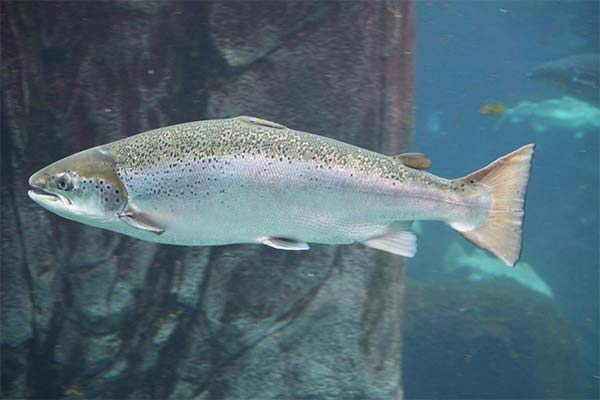
Salmon Fish.
The salmon is also called the "noble salmon." It differs from chinook salmon in appearance by its more even, silvery coloration and lack of dark gray and red speckles. The meat of salmon is pale pink, in contrast to the crimson color of chinook salmon.
So is chinook salmon, salmon - is the most valuable type of salmon and is famous for its delicious and tender meat rich in useful elements for the human body. It is fatty and juicy. Chinook salmon meat is less fatty.
In terms of taste characteristics the chinook salmon and salmon are more similar to each other than to other representatives of the salmon family.
From pink salmon
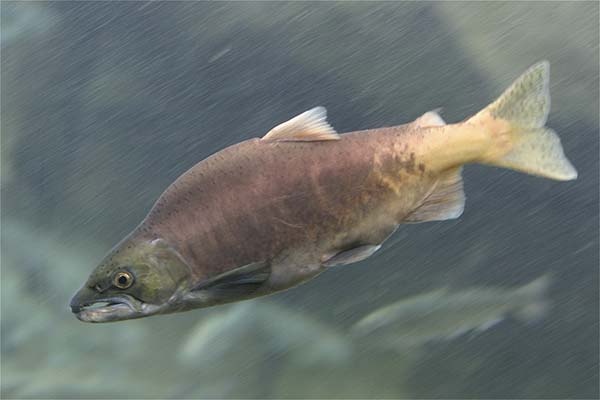
Pink salmon fish (Oncorhynchus gorbuscha)
Pink salmon is similar to the chinook salmon in some lifestyle characteristics. It differs in appearance by its fine, silvery scales. It also has spots, but more so on the tail. The size of pink salmon reaches a maximum of 70 cm. Another distinguishing feature in appearance is the hump on the backbone of males. This is where the affectionate name "humpback" comes from. It spawns on the North American continent and in Siberia, but, unlike the chinook salmon, it does not go upstream.
Pink salmon meat has a pronounced pink color. When cooked, the fillet is not as fatty and juicy as the chinook salmon fillet.
Pink salmon roe 3-5 mm in diameter is bright orange in color with a thin delicate shell.
From chum salmon

Chum salmon (Oncorhynchus keta)
The most common species of salmon is chum salmon. Its appearance is distinguished by its silvery coloration with no stripes, mottles or spots. During spawning, chum salmon coloration is almost black, probably for safety reasons.
The meat composition and taste of chum salmon is more similar to that of pink salmon.
Chum salmon caviar is considered the most valuable of all types of red caviar.
From coho salmon
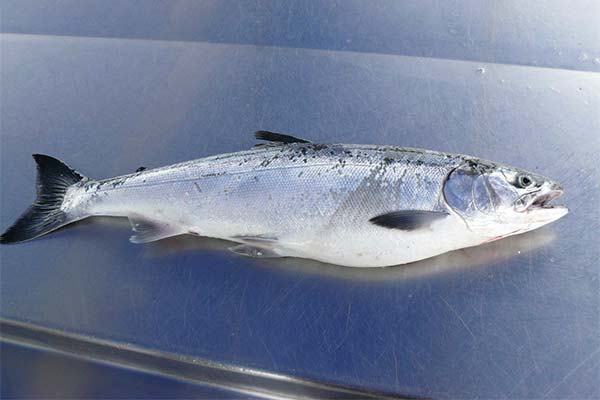
The silver salmon (Oncorhynchus kisutch)
This fish is also called "silver salmon," and in Rus was called "white fish" because of its bright silver coloring. This is a large individual, similar to the chinook salmon in body shape, which also changes color during the mating season. At the same time, the female color acquires a delicate pink hue, while the males become dark crimson. The number of silver salmon is low and, therefore, the fishing for this fish is reduced.
The meat of coho salmon meat is considered dietary due to its lower caloric value as compared to salmon. By the same characteristics, as well as the lack of bones, it is suitable for children's food. The taste of coho salmon meat is more similar to pink salmon than to salmon and chinook salmon.
Composition and calories
The meat of king salmon contains a large number of vitamins, micro-and macronutrients.
Contents in 100 g of the edible part:
Vitamins:
- Thiamine - 0.1 mg.
- Riboflavin - 0.12 mg.
- Choline - 89 mg.
- Pyridoxine - 0.278 mg.
- Folate - 2 mcg.
- Cobalamin - 1.3 ug.
- Vitamin C - 2 mg.
- Vitamin D - 20 micrograms.
- Alpha tocopherol - 1.7 mg.
- Phylloquinone - 0.1 µg.
Macronutrients:
- Potassium - 394 mg.
- Calcium - 22 mg.
- Magnesium - 27 mg.
- Sodium - 47 mg.
- Sulfur - 199.3 mg.
- Phosphorus - 200 mg.
- Chlorine - 165 mg.
Micronutrients:
- Iron - 0.7 mg.
- Manganese - 0.015 mg.
- Copper - 41 mg.
- Molybdenum - 4 mg.
- Nickel - 6 µg.
- Selenium - 36.5 ug.
- Fluorine - 430 ug.
- Chromium - 55 ug.
- Zinc - 0.7 mg.
Polyunsaturated fatty acids:
- Omega-3 - 2.342 g.
- Omega-6 - 0.269 g.
GI 100 grams of product - 19.1, 8, 0 g respectively. The caloric value is 148 kcal.
How is the chinook salmon useful?
Chinook salmon is considered beneficial to the human body because of the vitamins contained in its meat.
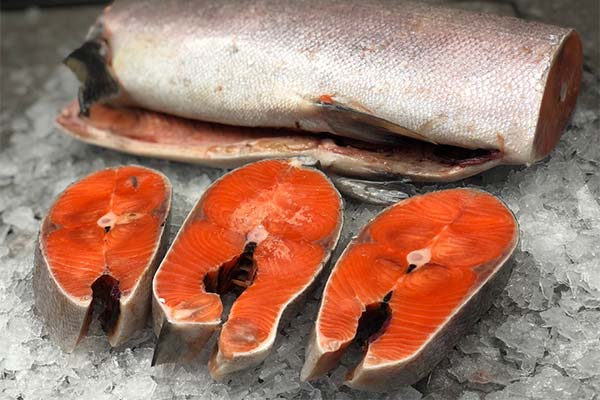
- A balanced complex of vitamins regulates the internal processes of hematopoiesis, hormonal and nervous system, has a beneficial effect on the visual organs and the gastrointestinal tract.
- Omega acids, Omega-3 and Omega-6 support the vitality necessary for the active functioning of the brain.
- Vitamins help restore vision, work to strengthen the immune system, have a positive effect on the nervous system processes, maintain a balanced blood composition.
The meat of king salmon contains a complex of macro- and microelements:
- Selenium is necessary for the thyroid gland and hormonal system, protecting the body from viral infections.
- Potassium is involved in conducting nerve impulses, stimulates the heart muscle.
- Phosphorus, magnesium and calcium are necessary for the mineralization of bones and teeth, and activates brain and muscle activity. Deficiency of these minerals leads to anemia, anorexia and rickets.
- Zinc promotes the resorption of tumors and is involved in the production of testosterone.
A word of caution. The quality of meat is influenced by the lifestyle of the individual at the time of the catch. Fish caught during the feeding period and being in the river for a short time is much more nutritious and tasty than fish caught in the mating season or after spawning.
Due to the lack of carbohydrates, it can be consumed in diet diets. Given the large amount of protein in the fillet, it is useful for athletes to build muscle mass.
Chinook salmon caviar benefits
Chinook salmon caviar is a rare delicacy. It differs from other species with a slight spicy bitterness. The color is red and sated. The average size is 5-7 mm.
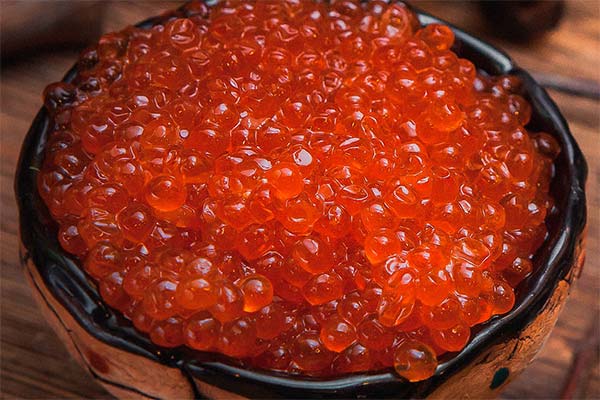
The content of docosahexaenoic and eicosapentaenoic acids in the caviar of the chinook salmon increases its value for consumption to maintain brain activity and cardiovascular system. These acids are quickly dissolved and absorbed by the body and are a natural preventative against strokes, heart attacks, arrhythmias, atherosclerosis and everything associated with them (dementia, depression).
Doctors recommend eating no more than 5 teaspoons of caviar a day. In the risk group are categories of people who suffer from diseases of the gastrointestinal tract and pancreas.
Harm and contraindications
Both caviar and meat of this titular fish can cause harm. The presence of contraindications to the product depends on the gastronomy: how the dish is prepared.
Fish in fried form should be eaten with caution and in small portions. It is not recommended to introduce it into the diet of those suffering from pancreatic diseases because of its high fat content.
How to choose and store
To buy quality chinook salmon, you need to know three basic rules: smell, sight, and touch.
- The smell must be pleasant. This is a basic rule of all products. Fresh sea fish smells like fish and the sea. River fish has the smell of the river. All other impurities of flavors will indicate stale, or poor storage of the product.
- The type of meat must be fresh. Chinook salmon fillets are pink or red when cut. A gray or brown hue is a sign of stale meat. The bright, dark red color suggests that dyes were used by enterprising traders.
- Chinook salmon does not lose its firmness when fresh. Freshness can be easily determined by pressing with a finger: the dent quickly returns to its original position. The dent, slowly taking the initial shape, or remaining in the squeezed position - indicates the unsuitability of the product, the consumption of which can lead to severe food poisoning.
At room temperature, the product retains its consumer properties for no more than 4 hours, 3 days in the refrigerator and up to 9-12 months in the freezer.
Where to buy and how much does it cost?
Chinook salmon is rarely seen on supermarket shelves, but online stores offer this delicacy in assortment. It is sold freshly frozen, whole or gutted, with or without heads, steaks and as minced meat.
Average prices for 1 kg:
- chilled steaks - 1300-1500 rubles;
- Freshly frozen with heads - 400-500 rubles;
- Freshly frozen without head - 700 rubles;
- filet - 1300-1500 rubles;
- caviar - 5000-6000 rubles.
How to cook Chinook salmon deliciously: Recipes
If you are lucky enough to buy fresh chinook salmon, you need to know how to cook it. Recipes are varied in their methods. King salmon can be cooked in the oven, on the grill, in a frying pan - if you follow some secrets, the dishes will turn out delicious and healthy.
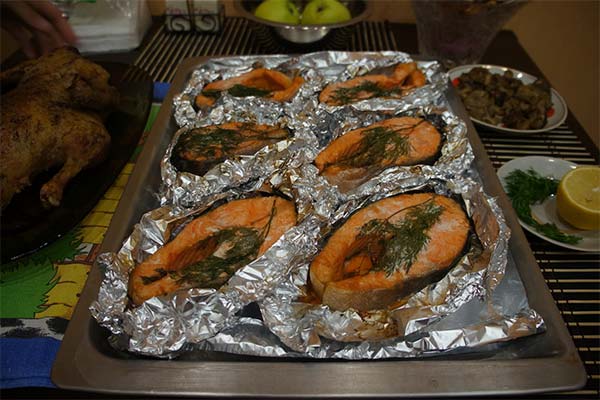
In the oven
Ingredients:
- Chinook salmon steaks - 1,5 kg.
- Soy sauce - 50 ml.
- Garlic - 3-4 cloves.
- Olive oil - 100 gr.
- Onions - 2-3 pcs.
- Tomatoes - 2-3 pcs.
- Red cabbage - 200 gr.
- Sweet pepper - 2 pips.
Marinade sauce: mix olive oil with minced garlic, a little salt.
Recipe:
- Dip washed, dried with a napkin steaks in the marinade while the vegetables are cooking.
- Boil the cauliflower in salted water for 5 minutes.
- Cut onion and tomatoes into rings, peppers into julienne strips, separate cauliflower into florets.
- Spread the foil on a baking tray and lay in layers in this order: onions, tomatoes, peppers, cauliflower. Place the fish fillets on top of the vegetables.
- Cover with foil and bake in a hot oven for 30 minutes at 200°C.
In a pan
Ingredients:
- Chinook salmon steak - 450 g.
- Olive oil - 2 tablespoons.
- Thyme - 1 sprig.
- Garlic - 1 clove.
- Sunflower oil for frying - 1 cup (regulate yourself).
- Butter for the filling - 50 g.
Preparation:
- Release the fish from the packaging, rinse, clean the scales on the skin and dry with a towel.
- Brush the steak with a little olive oil. Salt on both sides, distributing the salt evenly. Sprinkle a little black pepper. Place thyme and crushed garlic clove on steak. Leave for soaking for 10-15 minutes.
- At this time you can prepare mashed potatoes as a garnish.
- Put steak on a hot pan with sunflower oil. Next place a sprig of thyme and a clove of garlic. Sear the fish on each side for 1.5 minutes. Then repeat the frying for another 1 minute. Now you can pepper the fish and serve.
Serve the cooked chinook salmon steak with mashed potatoes, garnish with a sprig of parsley and drizzle with melted butter.
On the grill
- Prepare the fish: peel it, gut it.
- Cut along the back, divide accurately along the backbone into two longitudinal halves (the head, tail and backbone can be left for soup).
- Cut the meat for the shish kebab into pieces.
- Grease a little, pepper it a little, and splash with lemon or lime juice.
- Lime is used to thicken the structure of fish meat, but in moderation.
- Pour the sunflower oil and distribute it over the pieces of fish. Due to the oil grease, it will get a crust when frying.
- Put in a container for half an hour or longer, preferably up to 4 hours.
- Carefully string a piece of fish on a skewer, alternating with orange slices.
- Send to fry on the heated coals. In 5-8 minutes the kebab is ready.
Is it possible to salt chinook salmon?
Properly salted chinook salmon preserves all the useful properties of the product, and the dish turns out tender and royally delicious.
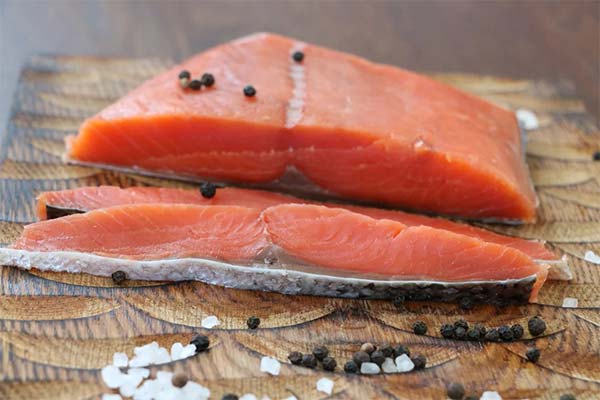
Ingredients:
- Chinook salmon fillets - 1 kg.
- Salt - 2 tablespoons.
- Sugar - 1 tablespoon.
- Black pepper.
- Spice for fish (optional).
How to salt:
- First you need to prepare the carcass: clean the insides, cut off the head, the tail part.
- Cut the fillet: free from the bones.
- Mix the ingredients for salting.
- Sprinkle the fillets generously and evenly with the mixture on both sides and lay them skin side down.
- Press down firmly with a lid. The fish will give out the juice, which does not need to be drained. After 24 hours you can eat chinook salmon.
Q&A
What does chinook salmon taste like?
The connoisseurs consider king salmon to be the most delicious of salmon species: tender, moderately fat meat with the flavor of northern seas. The taste reminds salmon.
Fatty or not
Chinook salmon is moderately fatty (10.43 g per 100 g), fatter than some salmon species such as pink salmon (4.40 g) and coho salmon (6.0 g), but less fatty than salmon (15 g).
Are there many bones in the fish?
The body of king salmon consists of meat, backbone, and fins. Only the backbone is bone. Fish can be fed to children unless the child has an individual intolerance to seafood.
Interesting Facts
The Russian writer of children's literature Evgeny Charushin beautifully and fabulously praises the northern nature with its wild rivers, fish, birds and bears - the masters of the forest. One of the tales describes the subtleties of the rich Kamchatka region, and, interestingly, the writer calls the chinook salmon "a huge precious salmon."
Another interesting fact: in the crossword dictionaries for chinook salmon synonyms "sister of pink salmon", "extinct volcano in Kamchatka" are applicable. Probably because the red chinook fish in Kamchatka is almost extinct.
«It is important: All information on this site is provided for informational purposes only. for informational purposes only. Please consult with your health care professional before using any of the recommendations. specialist before using any of the recommendations. Neither the editors nor the authors shall be liable for any possible harm caused by materials."

